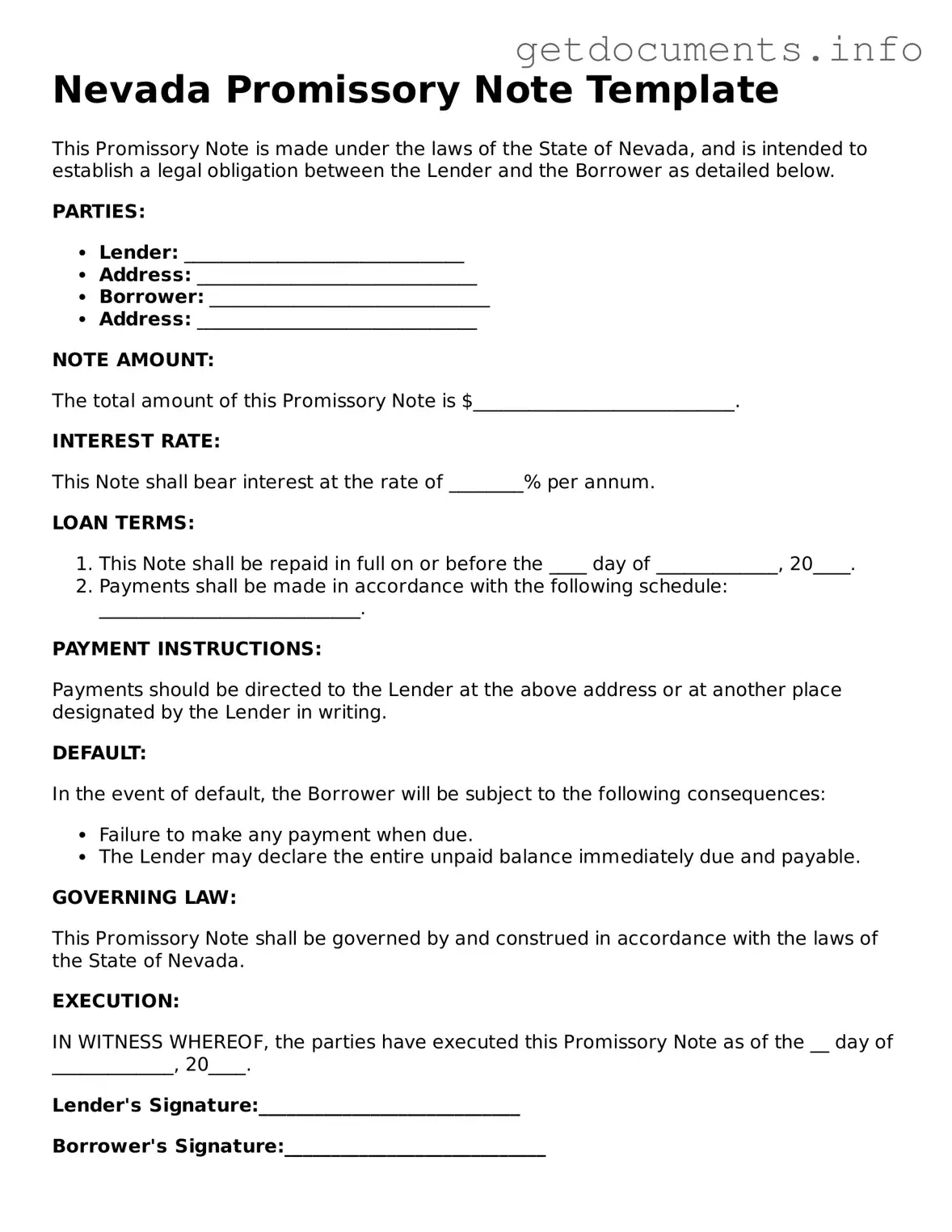Free Promissory Note Template for Nevada
A Nevada Promissory Note is a written promise to pay a specified amount of money to a lender at a future date. This document outlines the terms of the loan, including interest rates and repayment schedules. If you need to create or fill out this form, click the button below to get started!
Access Promissory Note Editor
